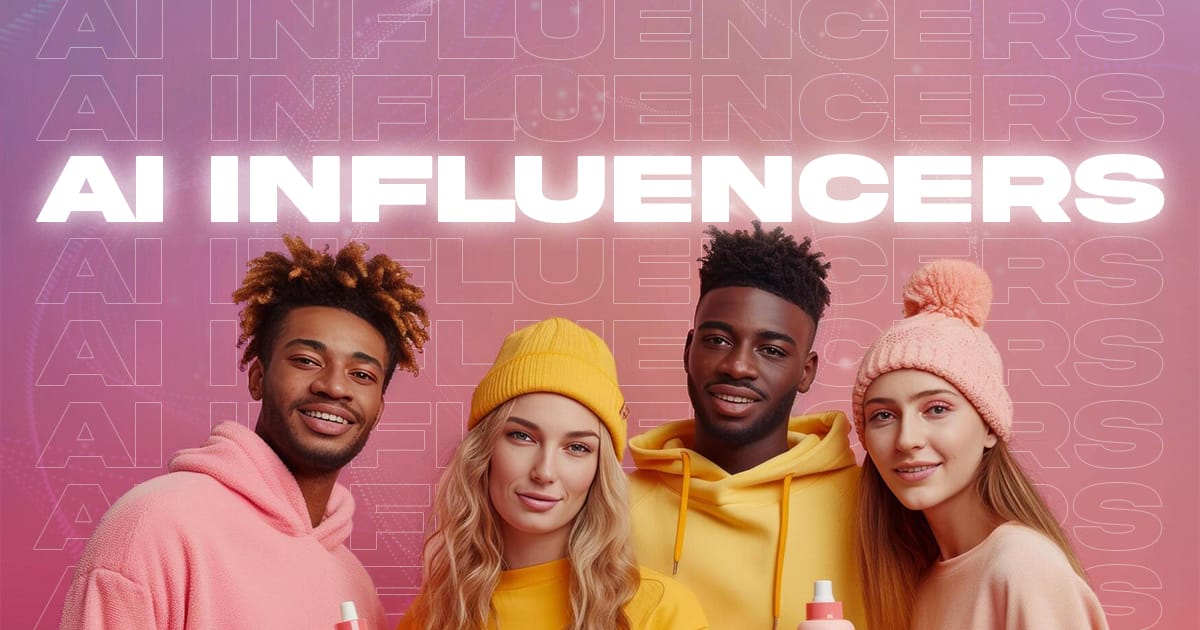In the legendary short story “Anukul” by Satyajit Ray, the main character, Nikunj Babu, a Hindi teacher, purchases a humanoid personal assistant, Anukul, from a local robot supplier. The salesperson cautions him against hitting the robot under any circumstances.
Soon after, Nikunj Babu’s cousin, Ratan, visits. Recently fired from his job due to conflicts between humans and robots (which is why I recommend establishing a “HAIR” department—Human & AI Resources), Ratan strikes Anukul with a clothing iron while Nikunj Babu is away. This results in damage to the robot. In a subsequent conversation, Nikunj Babu tells Anukul to follow its heart, but as we know, robots don’t have hearts.
When Ratan returns, he shares that he’s become a millionaire, inheriting wealth from a recently deceased uncle. While Nikunj Babu is out, Ratan again attempts to strike Anukul. This time, however, Anukul responds with a high-voltage shock, killing Ratan instantly. Later, a lawyer informs Nikunj Babu that, with Ratan’s passing, he has inherited his cousin’s $1.5 million fortune.
This story highlights an important point: while AI tools are becoming increasingly intelligent, mimicking human behaviour, they are still not flawless. Can we trust them blindly? Absolutely not! AI may be 99% accurate, but it’s never 100%. These systems analyse data, but without a heart, they cannot always deliver perfect insights. Marketers are increasingly relying on AI, but this blind trust can lead to hallucinations and errors.
As a new-age digital marketing agency in Kolkata, we integrate AI into our daily operations. However, we don’t just use AI—we guide you in using it wisely, with a human touch. Here’s the problem, and the solution to it:
1. What is AI Hallucination?
In simple terms, an AI hallucination occurs when an AI system generates an output that is factually incorrect, misleading, or even entirely made up. While AI tools are designed to enhance efficiency and improve accuracy, they aren’t infallible. Sometimes, these tools can create content or provide information that seems logical or believable but is far from the truth.
2. Types of AI Hallucinations
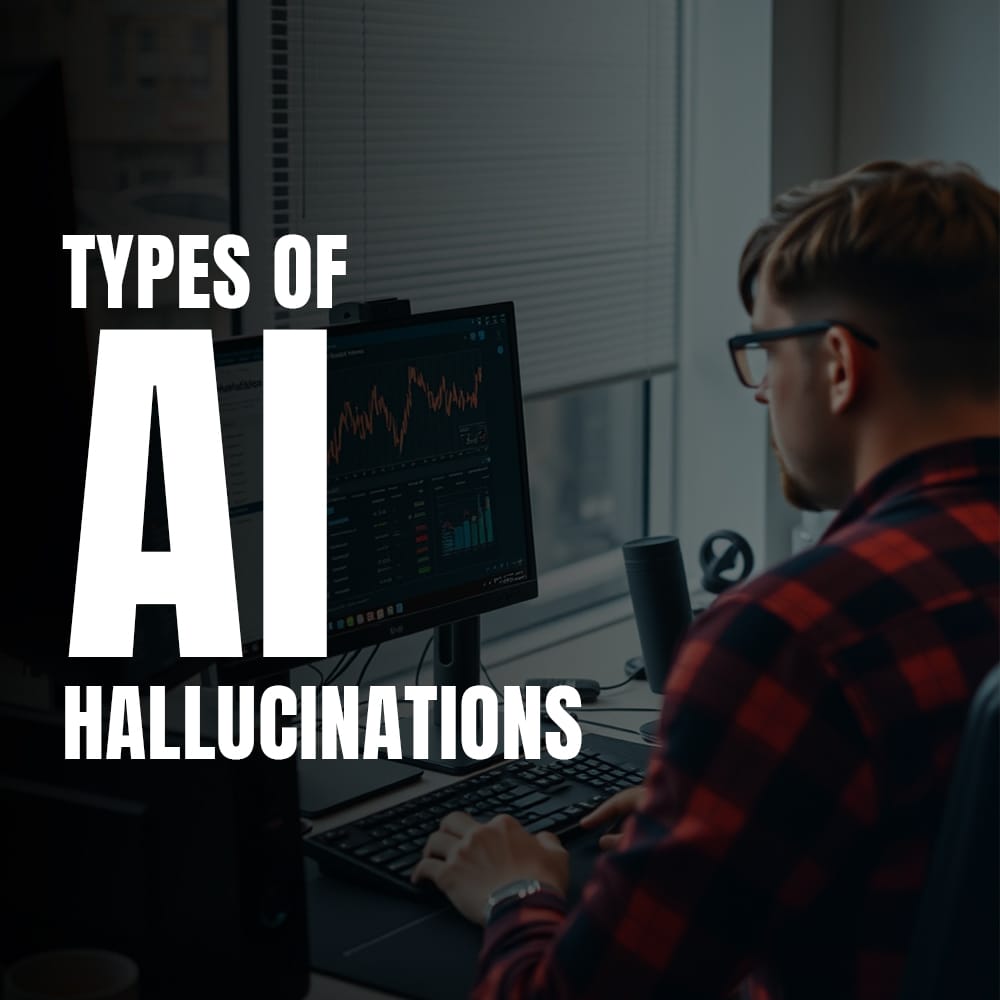
AI hallucinations are not limited to text-based models like ChatGPT or Google Gemini. They can occur in various forms, depending on the type of AI used. Here are some common types:
- Visual Hallucinations: Visual hallucinations occur when AI generates inaccurate or distorted images. AI tools like DALL-E or MidJourney, which create visual content from text prompts, can produce images that contain bizarre or impossible elements.
Example: A common visual hallucination occurs when AI-generated images contain distorted or incorrect details. For instance, an AI tool designed to create product mockups may generate an image with nonsensical details like an object with an extra arm or a piece of text that is garbled or misspelt.
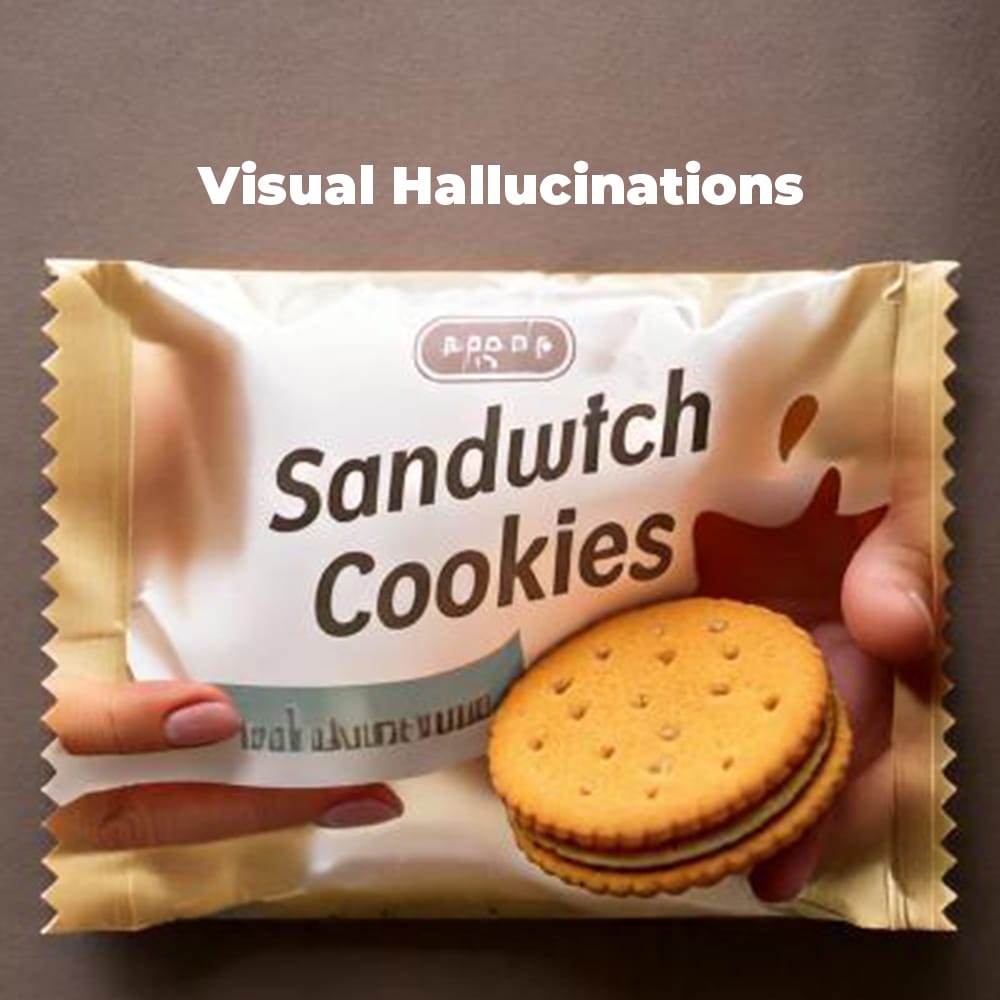
- Textual Hallucinations: Textual hallucinations are instances where AI generates incorrect or nonsensical text. This can happen when an AI content generator like ChatGPT or Google Gemini creates an article or blog post that includes fabricated statistics, false claims, or incomplete information. While the content might sound convincing, a closer look reveals that the numbers or case studies cited are entirely made up.
Example: Imagine asking an AI tool to generate a marketing report, and it outputs a claim that “95% of businesses increased their revenue by 30% last quarter due to AI adoption,” but there’s no evidence to back up this statistic. The AI may have combined patterns from previous data sources, but since the numbers are invented, they can lead to misleading content.
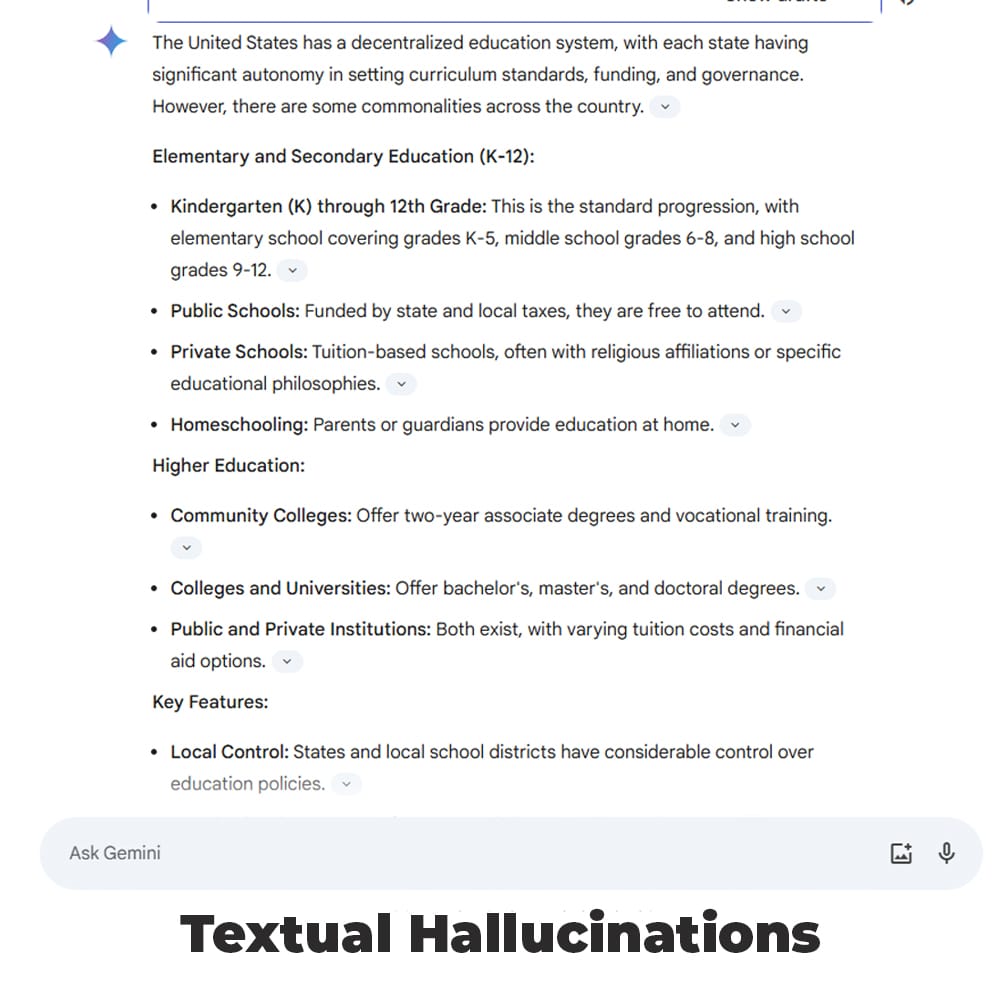
- Auditory Hallucinations: Although auditory hallucinations are less common in marketing, they can occur in AI-powered voice recognition or voice generation tools. These hallucinations happen when the AI misinterprets or invents sounds.
Example: An AI-generated transcription tool could misinterpret “Use comma here” as “US come here,” drastically changing the tone of a conversation. In a customer service context, this could lead to a serious misunderstanding and potentially harm customer relationships.

3. Why AI Hallucinations Occur
AI hallucinations are not deliberate. They occur due to several factors, some of which are inherent to the AI systems themselves. Here are the primary causes:
- Training Data: AI models learn from vast amounts of data sourced from the internet. The problem is that the data used to train these models is often a mixed bag—containing both accurate and inaccurate information. As a result, AI systems may inadvertently replicate the biases or inaccuracies present in the training data.
- Prediction, Not Truth: Generative AI, such as large language models (LLMs), are excellent at predicting what comes next in a sequence of words. However, they don’t verify facts or source information from credible databases. This can result in misleading outputs, especially when AI generates content that sounds plausible but isn’t backed by actual evidence.
- Design Limitations: AI models are designed to mimic human intelligence and generate content based on patterns and probabilities. However, when generating text, images, or other types of media, AI may unintentionally combine elements in ways that create false or nonsensical outputs.
4. Why AI Hallucinations Are Problematic for Marketing
AI hallucinations are problematic for several reasons, especially in marketing and content creation. As a digital marketing agency in Kolkata, what we find problematic are:
- Impact on Trust and Credibility: In marketing, trust is key. If AI-generated content contains errors or false information, it can undermine your brand’s credibility. For example, if an AI tool inaccurately analyses customer data or generates misleading content, it can affect decision-making and customer perception.
- Misleading Information: AI can generate content that misinforms customers. This is particularly harmful when promoting products or services. If your AI tool suggests a marketing strategy that’s based on incorrect data, it could lead to ineffective campaigns, wasted resources, and missed opportunities.
- Ethical and Legal Risks: In industries where accurate information is essential, AI hallucinations can pose serious ethical and legal risks. For instance, false claims about products or services could lead to consumer complaints, legal challenges, or regulatory penalties. Similarly, inaccurate customer data processing could lead to privacy breaches and legal consequences.
- Loss of Customer Engagement: If AI-powered personalization tools send out incorrect offers or content that doesn’t resonate with customers, it could alienate your audience, leading to a decline in engagement, conversions, and brand loyalty.
5. How Gr8 Brews Helps Address AI Hallucinations in Marketing
As a 360-degree marketing agency, at Gr8 Brews, we understand the growing role of AI in digital marketing, but we also recognize the risks AI hallucinations can pose. Our goal is to help businesses leverage AI’s benefits while mitigating its potential downsides. Here’s how we address the issue of AI hallucinations:
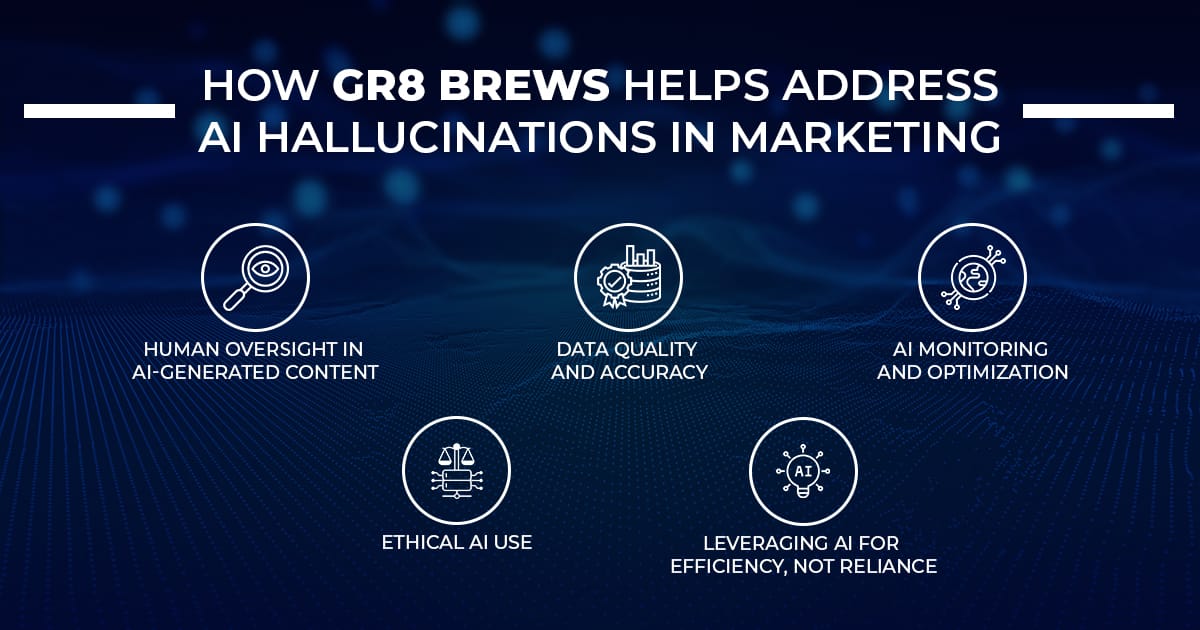
- Human Oversight in AI-Generated Content: While AI can automate content creation, we believe that human intuition and expertise are irreplaceable. Gr8 Brews combines the power of AI with human oversight to ensure that all generated content is accurate, aligned with your brand voice, and thoroughly reviewed before being published.
- Data Quality and Accuracy: We focus on using AI tools that are trained on high-quality, up-to-date data sources. By ensuring that the tools we use are grounded in reliable information, we minimise the chances of AI hallucinations affecting your marketing campaigns.
- AI Monitoring and Optimization: We continually monitor the outputs of AI tools. By tracking the performance of AI-generated content, we can spot inconsistencies, inaccuracies, or hallucinations early on. We then make the necessary adjustments to keep your content on track and performing at its best.
- Ethical AI Use: Ethical considerations are at the heart of everything we do. We use AI tools in a way that respects privacy laws, ensures compliance, and builds trust with your audience. By following best practices in AI usage, we help your brand avoid legal and ethical pitfalls.
- Leveraging AI for Efficiency, Not Reliance: While we integrate AI to streamline processes like content creation, data analysis, and reporting, we ensure that AI is a complement to, not a replacement for, human strategy. Our team brings the right expertise and creativity to the table, ensuring that AI supports your marketing efforts without taking over entirely.
If technology advances to make AI truly human-like, it might one day even have a heart, just like Satyajit Ray’s Anukul. After all, making mistakes is part of being human. AI is here to stay, but that doesn’t mean it should take the reins of your marketing strategy—because a strategy alone can’t brew a Gr8 brand! We’re here to stay too, as a digital marketing agency partnering with you to craft a unique brand identity and create something extraordinary together. Let’s collaborate and brew the best for your brand!




